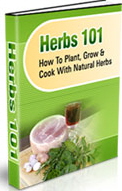Lavendar
 The Lavender plant is a petite shrub that grows up to around 2 feet in height. The characteristic lavender scent comes from the distinctive flowers that are grown by the plant. Lavender grows in a variety of conditions, and may be grown be any home garden enthusiast. Of the different types of Lavender, the English variety gives off the most aromatic scents.
The Lavender plant is a petite shrub that grows up to around 2 feet in height. The characteristic lavender scent comes from the distinctive flowers that are grown by the plant. Lavender grows in a variety of conditions, and may be grown be any home garden enthusiast. Of the different types of Lavender, the English variety gives off the most aromatic scents.
Health Benefits
Herbalists have used the Lavender plant to treat a variety of ailments, including depression, anxiety, and insomnia. Different treatments are derived from different parts of the plant. Whole flowers may be dried, while Lavender oil is made from using the fresh flowers straight from the plant.
Growing Lavender
A Lavender plant may be grown in a home garden from seeds, a started plant, or from clippings. Lavender plants prefer sunny conditions, and should be planted in an area with lots of direct sun. These plants are also prone to fungus growth, so damp shady areas should be avoided.
When growing outside, choose a location that is well-draining, with sandy soil that may even contain stones. Traditional wild Lavender plants are native to rocky soils in the Mediterranean, which is naturally rocky. Lavender should be planted in fall for best results the next growing season.
When growing lavender indoors or in containers be sure to also use sandy soil. Traditional potting soil should be augmented with sand, small pebbles, and lime for the best results. The plants also prefer lots of air circulation, but without too much wind.
Lavender should be watered regularly, but not overwatered. Allow the plants to dry before you water again.
Harvesting Lavender
Cut the lavender stems which have flowers, and cut them in the early morning after the dew has dried but before the sun dries up too much of the plant’s essential oils. The essential oils create the scent, and you want to preserve them as much as possible.
If you are not using the fresh Lavender to make oils, or in baking, you may dry the extra branches for later use. To dry, you may either dry on a screen or hang bunches is a dry space. Once dry, store the branches in a cool, dark place.

